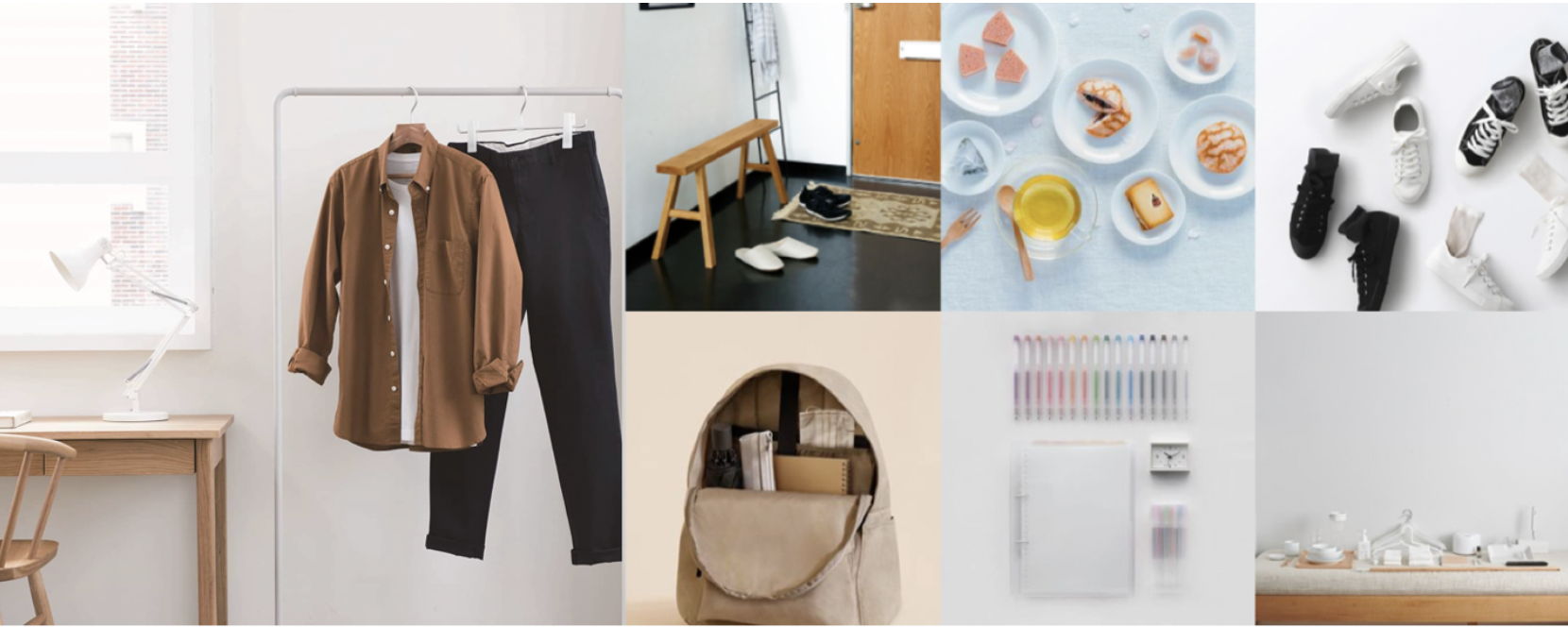MUJI Backgrounder

ABOUT MUJI
MUJI is a global retailer of high-quality, simple products across categories -- from homewares to fashion to wellness and more -- that provide satisfying, expertly-designed solutions for everyday needs. There is a magic in something that is an everyday, utilitarian object that is just right and perfectly designed for its exact purpose -- no more, no less, but just enough. That feeling of magic is MUJI.
Established in Japan in 1980, MUJI has steadily grown as the go-to brand for millions of loyal customers in 32 countries and regions around the world offering over 7,000 products. An affordable brand for basics across categories -- from toothbrushes to ladles to pens to aroma diffusers to slippers to chairs and more -- MUJI’s products are always handsome, durable, and reliable, created to enable customers to live better, simpler, easier lives. While varying significantly in purpose and use, MUJI products are marked by the quality, craftsmanship, knowledge, expertise, and skill that is embodied in being able to get something very simple very right.
While MUJI remains committed to its brandless mentality, its ethos is deeply rooted in a strong, intentional design ethos that has attracted an impressive range of collaborators who share this ethos. MUJI’s advisory board includes some of Japan’s most respected designers, including Kenya Hara and Naoto Fukasawa, and the brand has collaborated with international talents including Enzo Mari and Konstantin Grcic.
MUJI is also a responsible neighbor globally and locally, working to create positive impact in all of its communities and networks. Spanning beyond its product offerings, MUJI strives to embody business practices that demonstrate a commitment to the environment and communities where it produces and sells goods worldwide.
MUJI TIMELINE
1980: MUJI is established as a brand within the supermarket chain, Seiyu Store, developed to offer affordable, good quality products. This ethos is embodied in the name MUJI itself (short for MUJIrushi Ryōhin – loosely translates as ‘No-Brand, Quality Goods’), which implies that it is a brand that prioritizes function above all else. MUJI’s first slogan, loosely translated as ‘Lower priced for a reason’, underscored that MUJI was conceived to cut waste and in turn, cut retail prices. A great example of an early MUJI product was U-shaped spaghetti, which ensured no waste was created between production and packaging.
As Masaaki Kanai, the Chairman of Ryōhin Keikaku CO., LTD, the retailer and wholesaler of Mujirushi Ryohin (or MUJI) brand products, describes: “MUJI was essentially founded by designers; founder, Seiji Tsutsumi embodied those interests and talents. Ikko Tanaka was the first MUJI art director, and he was famous for saying that they created MUJI as a way to find the best consumers in Japan. Retail companies will normally sell anything that the consumer will buy. But, MUJI refuses to sell anything that won't lead to better living on the part of the consumer.”
1983: MUJI quickly became a success within The Seiyu, and branched out into its first full MUJI retail store in Tokyo. Takashi Sugimoto from Super Potato designed the interior space of the store, constructing everything of wood, metal, earth and rock as the basic building materials.
1985: MUJI began to expand outside of Japan, branching into overseas production and procurement. 1989: Ryohin Keikaku CO., Ltd established; Ryōhin Keikaku is, for all intents and purposes, synonymous with MUJI as the Japanese headquarters/parent company of the global brand and its regional businesses.
Late 1980s: MUJI participated in an exhibition of Japanese products in London and sparked a great deal of interest from British retailers, leading to a joint venture with Liberty, a design-focused UK department store.
1991: MUJI opened its first international store in London, shortly followed by a standalone store in Hong Kong.
Mid-1990s: MUJI’s international footprint expands, with stores opening in Singapore, and France, to name a few.
1995: MUJI begins to operate campsites across Japan, with the opening of the MUJI Tsunan campsite. 1998: Ryōhin Keikaku was listed on the Tokyo Stock Exchange.
1999: Naoto Fukasawa joins MUJI’s design team.
Early 2000s: MUJI’s international footprint expands, with stores opening in Korea and Italy, to name a few.
2001: Kenya Hara joins MUJI’s advisory board and takes over as art director.
2004: MUJI’s explorations in the housing area began, creating fully-established homes designed and built by Ryohin Keikaku’s subsidiary, MUJI HOUSE Co., LTD. Beginning with the development of Ki no Ie (The Wood/Tree House) in 2004, Mado no Ie (Window House) in 2007, Tate no Ie (Vertical House) in 2014 and continued with the widely-celebrated Yo no le (Plain House) that launched in 2019.
2005: MUJI was awarded five Gold product design awards, by the International Forum Design in Germany.
2005: MUJI’s first store opens in mainland China.
2007: MUJI opens its first US store in New York City’s SoHo neighborhood.
2010s: MUJI’s international footprint expands, with stores opening in Australia, India, and Canada, to name a few.
2017: MUJI begins producing the MUJI Hut, a line of prefab living accommodations to emulate the MUJI experience and living simply.
2018: MUJI launches its hotel concept with two MUJI hotels in China. 2019: MUJI opens its first hotel in Tokyo, the MUJI HOTEL GINZA.
2019: MUJI unveils plans for the MUJI GACHA, a self-driving bus for regions without well developed public transit methods, in partnership with Sensible 4.